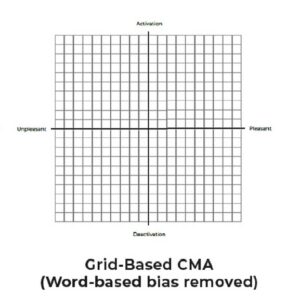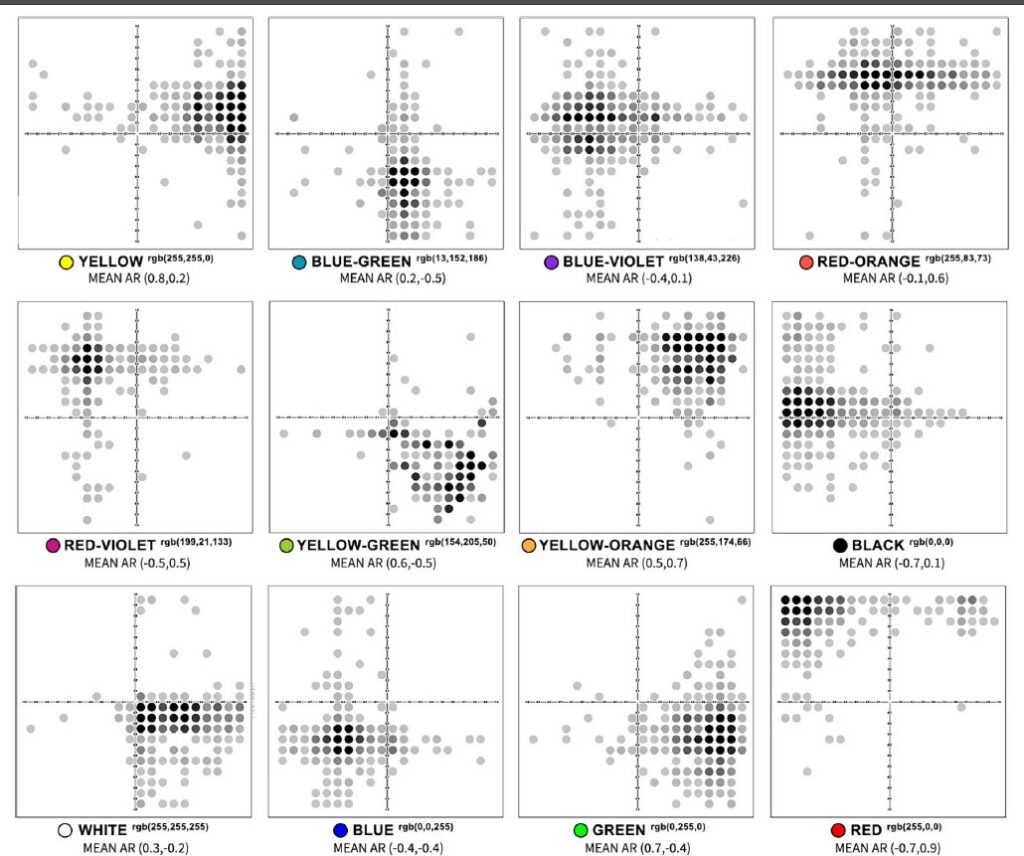After having dived deep into the topic of UI aesthetics and having collected sources, I began reading interesting material in more detail. Unfortunately, most studies I found seem to be more than 10 years old. However, I was able to find a fascinating paper by Labake Odushegun, who conducted a study about how users respond affectively to 43 atomic aesthetics, focusing on typography, colour and animation called “Aesthetic semantics: Affect rating of atomic visual web aesthetics for use in affective user experience design” (Odushegun, 2023, p.1).
Odushegun describes that the reason for her close investigation of the topic was that she noticed that many UX designers begin their process by creating a beautiful interface, while they actually should consider the core perceptions for possible aesthetics of choice that users have beforehand (Odushegun, 2023, p.1). Subsequently, she then conducted a study with 1.782 participants from all over the world and measured affective ratings to determine the effect of the aesthetic options presented to the participants (source 1, p.1). Some of those affective ratings for different colours, fonts and animation devices are displayed here:
Figure 1: Colors and fonts tested in the research conducted by Odushegun

Note. From “Aesthetic semantics: Affect rating of atomic visual web aesthetics for use in affective user experience design,” by L. Odushegun, 2023, International Journal of Human-computer Studies, Volume(171), p. 6 (https://doi.org/10.1016/j.ijhcs.2022.102978). Copyright 2023 by L. Odushegun.
Figure 2: Grid-Based CMA used in the research conducted by Odushegun

Note. From “Aesthetic semantics: Affect rating of atomic visual web aesthetics for use in affective user experience design,” by L. Odushegun, 2023, International Journal of Human-computer Studies, Volume(171), p. 6 (https://doi.org/10.1016/j.ijhcs.2022.102978). Copyright 2023 by L. Odushegun.
Figure 3: Results for the different colours

Note. From “Aesthetic semantics: Affect rating of atomic visual web aesthetics for use in affective user experience design,” by L. Odushegun, 2023, International Journal of Human-computer Studies, Volume(171), p. 8 (https://doi.org/10.1016/j.ijhcs.2022.102978). Copyright 2023 by L. Odushegun.
Figure 4: Results for the different fonts

Note. From “Aesthetic semantics: Affect rating of atomic visual web aesthetics for use in affective user experience design,” by L. Odushegun, 2023, International Journal of Human-computer Studies, Volume(171), p. 9 (https://doi.org/10.1016/j.ijhcs.2022.102978). Copyright 2020 by L. Odushegun.
Odushegun concludes her study by stating that “[u]ser-responses were most unanimous in atomic colours, neutral AR typefaces (i.e. Merriweather) showed suitability for unbiased content (i.e. legal and informational sites), and animations as a whole garnered the most user attention. Findings suggest AR has potential use in the affective UX design process, and the data format presented allows for computational application in real-world use cases” (Odushegun, 2023, p.11).
So, it seems like every design choice even on the most detailed level leads to a different aesthetic experience in UX/UI design. This seems very obvious, but I cannot help but wonder whether there were big groups / similarities within her affective ratings. Do people from all cultures perceive the same UX/UI design as aesthetic?
References:
Odushegun, L. (2023). Aesthetic semantics: Affect rating of atomic visual web aesthetics for use in affective user experience design. International Journal of Human-computer Studies, 171, 102978. https://doi.org/10.1016/j.ijhcs.2022.102978